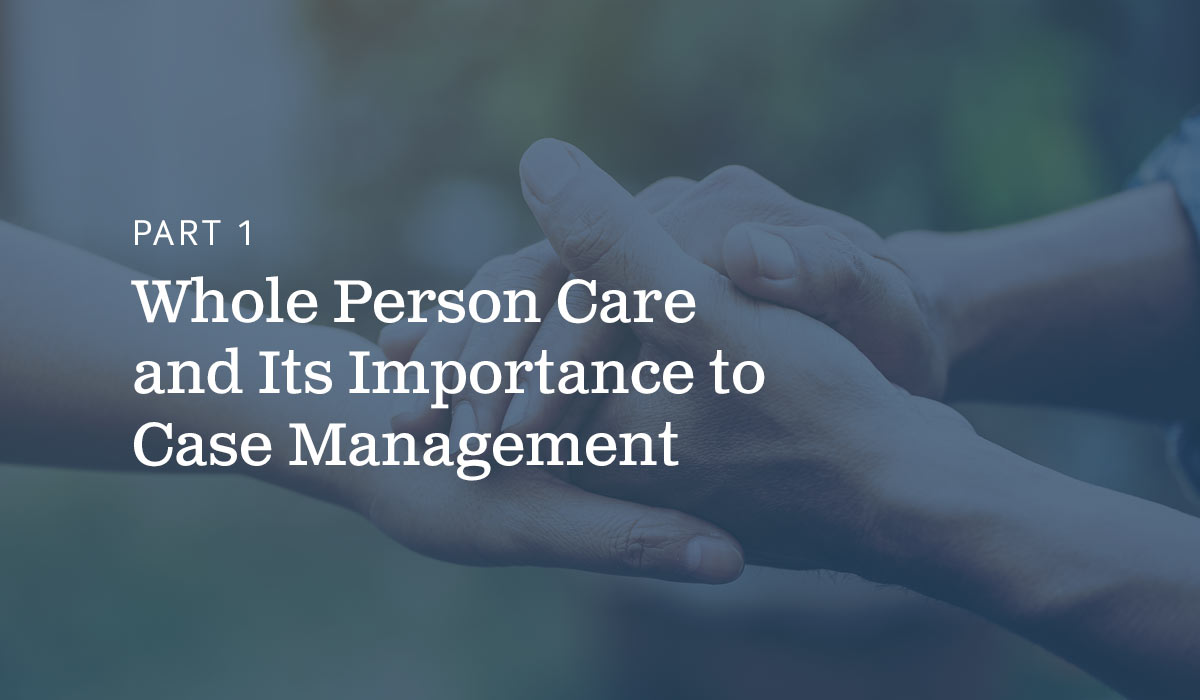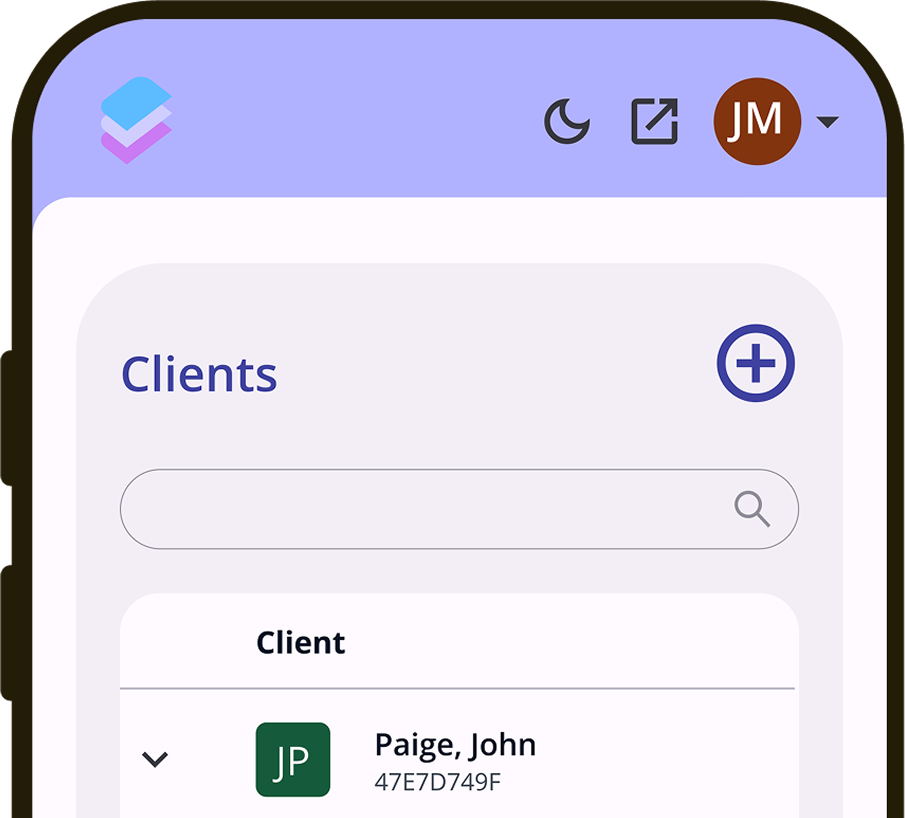
Many of the most vulnerable among us live without stable access to housing. Lacking the security of shelter and home is the center from which many other social or personal hardships arise.
No social issue exists in a vacuum, nor does its solution.
Whole person care is intended to address the multi-faceted nature of the challenges people face when experiencing homelessness. By utilizing a comprehensive information system that coordinates with different types of care providers and regional agencies, case managers can effectively and holistically meet the diverse needs of unhoused neighbors and community members.
What Is Whole Person Care?
Whole person care is a patient-centered human services approach that integrates a diverse range of resources to meet the behavioral, material, mental, and social needs of people in vulnerable circumstances. Put simply, it’s a health system aimed to care for the spirit, body, and mind of individuals.
Whole person care goes above and beyond the standard Homeless Management Information System (HMIS) because it involves integration with Electronic Health Record (EHR) systems and other databases. It’s the integration between different systems of care that makes whole person care possible—and so effective.
Rather than utilize isolated interventions, such as focusing only on whether an individual has medication or access to affordable housing, whole person care uses a holistic or “wrap around” method. Many advocate for this approach given the understanding that no human need or challenge can be addressed through an atomistic lens. Lack of housing is not a solitary issue.
Problems compound other problems and interlock in messy ways. For example, someone experiencing homelessness would have more difficulty finding a job, and not having an income makes finding housing more challenging. Financial instability increases stress and undermines a person’s mental wellbeing. This can exacerbate their physical health, leading to accumulated medical costs, thus worsening their economic situation.
On the optimistic side, just as each additional barrier to wellness multiplies its detrimental effects, taking a holistic approach amplifies each benefit and increases the chances to get someone into permanent housing and the care they require.
Lack of housing is a primary source of trauma for individuals and families who experience homelessness. Thus, agencies within a CoC tend to focus on housing people first and then addressing other related needs. Individuals are assessed and their information entered into a system, which waitlists them for other care services targeted toward their specific challenges.
This housing-first approach collaboratively helps people become more self-sufficient as they leave homelessness—and its related traumas—firmly in the rearview.
Humanizing Case Management
So many case managers advocate whole person care because it encourages a more humanizing way to help people at risk of or already experiencing homelessness. Utilizing a robust HMIS, such as Clarity Human Services, enhances human service workers’ abilities to keep a human-centered approach that also employs accurate, real-time data.
By integrating with other care platforms, an HMIS provides a more comprehensive way to address the Social Determinants of Health (SDOH), which are defined by the Centers for Disease Control and Prevention (CDC) as “conditions in the places where people live, work, and play that affect a wide range of health risks and outcomes.”
For example, a quality HMIS will include location-aware features that enable field workers visiting an encampment to better track where clients reside and where they're moving. This, in turn, allows them to log crucial information about their client's exposure to potential environmental contaminants and social risks or their proximity to vital resources like groceries and showers.
It’s a huge benefit to people experiencing homelessness because it improves an agency’s ability to literally see who’s most vulnerable and deliver services tailored to those individuals as soon as resources become available. Whole person care is better for case managers as well. With better data, they can get a clearer picture of their challenges, set expectations for clients, and establish trust.
Whole Person Care in Action
CoCs have found effective results implementing whole person care strategies. Consider Contra Costa Health Services in Martinez, California. They have been using the Epic EHR system since 2012 to meet the needs of their patients. In 2016, in an effort to further embrace a whole person care approach, they integrated it with their behavioral health and social needs support into one centralized record.
More than 100 direct service case managers were supporting more than 14,000 patients a month. Using interactive dashboards, streamlined Smartforms, and well-integrated databases, case managers could track important milestones and see newly enrolled patients added in real-time.
Sue Crosby, whole person care program director at Contra Costa Health Services, explains: “The core aim of the dashboards was to equip frontline workers with data to understand, target, and improve the services they provide.”
This shared data allows all members of the care team within the CoC to easily access a client’s record and provide the appropriate services when resources are made available.
Imagine a father of three who has been without housing for 12 months. With an EHR integrated to an HMIS administered by a CoC, he can show up to a clinic for a psychiatric visit and a care worker could immediately learn he’s received emergency care 12 times at three other clinics related to substance abuse in the past year. This care worker can then enroll him into a substance abuse program, and his case manager would automatically be notified. The case manager, for example, might then reach out to a child care agency to assist the family while he receives mental health attention.
Not only do these technologies help case managers easily identify frequent users of multiple systems, but they’re also able to build a consistent and reliable relationship with their patients. To those experiencing homelessness, they become a familiar human face in a landscape of many programs or agencies that can feel alienating or dehumanizing at times.
Furthermore, centralizing all this data and making it accessible through a web portal increases the scale at which case managers and caretakers can address the needs of people experiencing homelessness.
Crosby observes: “Rather than tracking housing priority manually for more than 700 new clients a month, [we] are now able to identify the most vulnerable clients, match them to appropriate levels of supportive housing, and more accurately and efficiently assign housing resources across the entire county.”
Crosby observes: “Rather than tracking housing priority manually for more than 700 new clients a month, [we] are now able to identify the most vulnerable clients, match them to appropriate levels of supportive housing, and more accurately and efficiently assign housing resources across the entire county.”
Whole Person Care with Clarity Human Services
As many cities and counties throughout the United States aspire toward whole person care, a well-integrated HMIS should be at the heart of these efforts. This is vital to empowering case managers as they serve their clients.
Clarity Human Services (Clarity), Bitfocus’ software offering, is the fastest-growing HMIS in the nation. It is designed specifically to serve homeless populations and comply with HUD’s data collection, management, and reporting standards.
With advanced features such as data analysis, GIS, built-in Coordinated Entry functions (waitlist and referral management system), and integration capabilities, Clarity empowers CoCs to advance their homelessness strategy in a humanizing way. People aren’t merely data points or parts of a larger trend. Their particular circumstances can be tracked closely so agencies can better meet their unique needs and help strategize for the long term.
Furthermore, a powerful HMIS provides a way to track and identify local factors in ways some assessment tools struggle to account for—such as the VI-SPDAT. The more background and local knowledge a case manager can bring with them into an interaction with a client, the more effective and humanizing the encounter will be.
Clarity Human Services continues to advance its mission of empowering communities nationwide who are looking for better ways to use technology, data, and policy to improve their systems of care.
